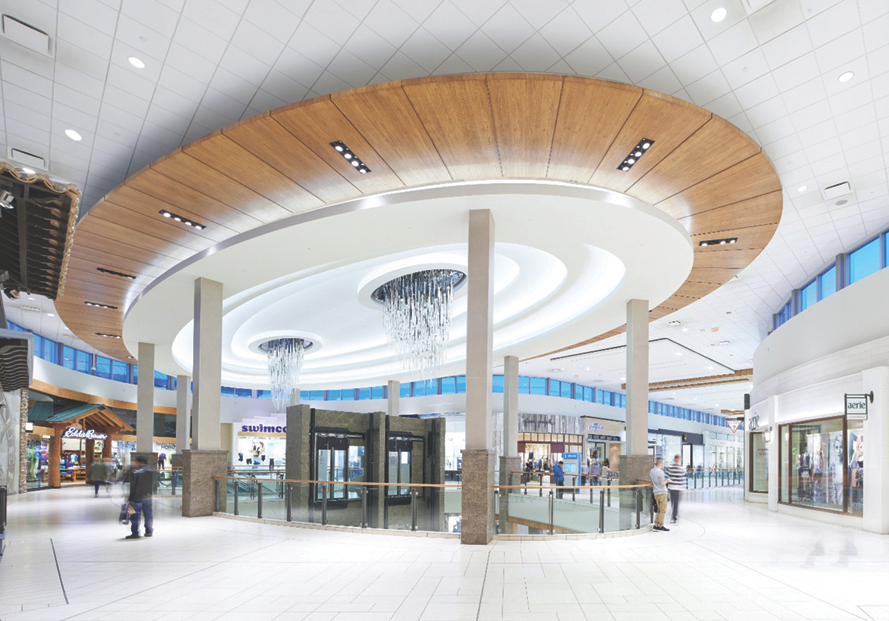When the Conference Board of Canada announced in December that Calgary had bounced off the bottom of a three-year recession in 2017 and was turning toward recovery, the reaction of shoppers at the bustling Chinook Centre was likely “There was a recession?”
Cadillac Fairview’s Chinook Centre has remained among the top 10 most productive malls in Canada for the past two years, posting per-square-foot sales of $1,074 in 2017 to move from No. 6 to No. 7 in the annual ranking by the Retail Council of Canada.
That’s higher than B.C.’s largest shopping centre – Metropolis at Metrotown – and eclipses Ontario’s mega Square One Shopping Centre in Mississauga, the third-largest mall in the country.
This year, Cadillac Fairview will spend $17 million sprucing up Chinook’s food court and another $4.5 million on enhancements.
Seattle-based high-end retailer Nordstrom is a new tenant at Chinook Centre, and luxury leader Saks Fifth Avenue will open a 115,000-square-foot-store in the mall this month.
Two clues why premier international retailers want into Calgary: despite the downturn, the city has among the highest average family incomes in the country, at $137,761. And oil prices are rebounding.
Calgary’s retail spending has been consistently running at more than $6 billion a month right through the last three years and only slipped into second place behind B.C. in 2016, more due to a B.C. rally than a Calgary decline.
With per-square-foot retail sales across the city at a respectable $777 per square foot in 2017, Calgary’s retail vacancy rate at year-end had plunged to 3.1 per cent after starting the year at near-record highs.
Enclosed shopping malls and power shopping centres both have around 1 per cent vacancies, impressive by any measure.
And, in perhaps the strongest signal of recovery, downtown retail vacancy rates in the central business district and the Beltline dropped to 9.7 per cent, down from double digits a year earlier.
“[Retail] activity percolated along the 4th Street corridor and 17th Avenue,” noted Barclay Street Real Estate analyst Anthony Scott.
New arrivals include Rawleigh Food Mart, which has moved into the once-struggling Landmark Centre. TD Canada Trust has sprouted a branch on 4th Street, and Arc’terix, the high-end sportswear leader, opens on 17th Avenue SW this spring.
As of the end of last year, downtown retail had seen three consecutive quarters of positive net absorption, Barclay noted.
There has been little new street front retail added recently in the core – 88,000 square feet – but nearly 500,000 square feet of suburban space was completed in the first half of last year alone.
This includes Hopewell’s 207,000-square-foot shopping centre, Mahogany Village Market; a 128,000-square-foot neigbourhood centre by First Capital; and 103,000 square feet added to the Deerfoot Centre by Shape Properties. Ikea has expanded by 27,000 square feet at Deerfoot Meadows.
You know retail is hot in car-crazy Calgary when developers start ripping up parking lots for more retail space. These “retail pad” projects kicked into high gear last year as mall owners reclaimed large sections of parking to add shop clusters. The best example is Southpointe Shopping Centre, where Choice Properties built new shops on what had been choice parking space.
Avison Young summed up Calgary’s 2018 outlook in five words: bottom reached and recovery commenced. The agency noted that the Calgary’s retail sector should brace for higher demand in 2018, noting that cannabis legalization this July has “significant implications for retail opportunities.”
Office and investment
The uptick in central business district retail is welcomed because it had been weighted down by the vacant office space that surrounds it. The most vivid reminder of what Calgary has been going through since oil prices crashed in 2014 is that nearly a quarter of all the downtown office space is empty, just as two giant new office towers have opened.
There are subtle signs of recovery, but Avison Young cautions not to expect the office numbers to change much until the second half of this year.
But bullish investors are coming back into Calgary, drawn perhaps by plunging assessments. It is estimated that downtown office towers have shed $4 billion in value in the past two years.
Groups have been “purchasing [Calgary] assets at prices not seen in more than a decade,” Avison Young noted.
“An increasing number of transactions in 2018 are expected to drive investment dollar volume to its highest level in three years,” the agency forecast.
Calgary is back.



